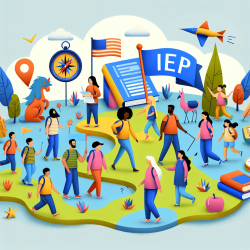Introduction
The Individualized Education Program (IEP) is a critical component in ensuring that students with exceptionalities receive a tailored educational experience that meets their unique needs. In Kansas, the IEP process is governed by specific regulations designed to provide a Free Appropriate Public Education (FAPE) to every eligible child. This blog will break down the key elements of the IEP process in Kansas, providing an easy-to-read guide for parents, educators, and anyone interested in special education.
What is an IEP?
An IEP is a written statement developed for each student with an exceptionality, outlining their educational program. It is created, reviewed, and revised according to special education laws and regulations. The IEP team, which includes parents, school professionals, and the student (when appropriate), collaborates to develop the IEP. The goal is to ensure that each child receives an education that is appropriate and meaningful, helping them meet challenging standards and achieve postsecondary goals.
Key Components of an IEP
- Present Levels of Academic Achievement and Functional Performance (PLAAFP): This section describes the student's current performance and how their exceptionality affects their involvement in the general education curriculum.
- Measurable Annual Goals: These goals are designed to meet the student's needs and enable them to progress in the general education curriculum.
- Special Education and Related Services: The IEP outlines the services and supports that will be provided to the student, including any accommodations or modifications.
- Participation in State and District-Wide Assessments: The IEP team determines how the student will participate in assessments and any necessary accommodations.
- Transition Services: Beginning at age 14, the IEP must include postsecondary goals and transition services to assist the student in moving from school to post-school activities.
The IEP Team
The IEP team plays a crucial role in developing and reviewing the IEP. Members of the team include:
- Parents or guardians
- At least one regular education teacher
- At least one special education teacher or provider
- A representative of the school district
- Individuals who can interpret evaluation results
- Others with knowledge or special expertise about the child
IEP Meetings
IEP meetings are held at least annually to review and revise the IEP as needed. Parents and school staff can request a meeting at any time if they feel the IEP is not meeting the student's needs. During the meeting, the team discusses the student's progress, any lack of expected progress, and any new information that may impact the IEP.
Transfer Students
When a student with an IEP transfers to a new school district, the new district must provide services comparable to those in the student's previous IEP until a new IEP is developed. This ensures continuity of services and supports for the student.
Implementing the IEP
Once the IEP is developed, the school must obtain parental consent before implementing services. The IEP must be accessible to all educators and service providers responsible for its implementation, ensuring that everyone involved understands their specific responsibilities.
Conclusion
The IEP process is a collaborative effort aimed at providing students with exceptionalities the education they deserve. By understanding the components and procedures involved, parents and educators can work together to create effective and meaningful educational plans for students. For more detailed information, please follow this link.










